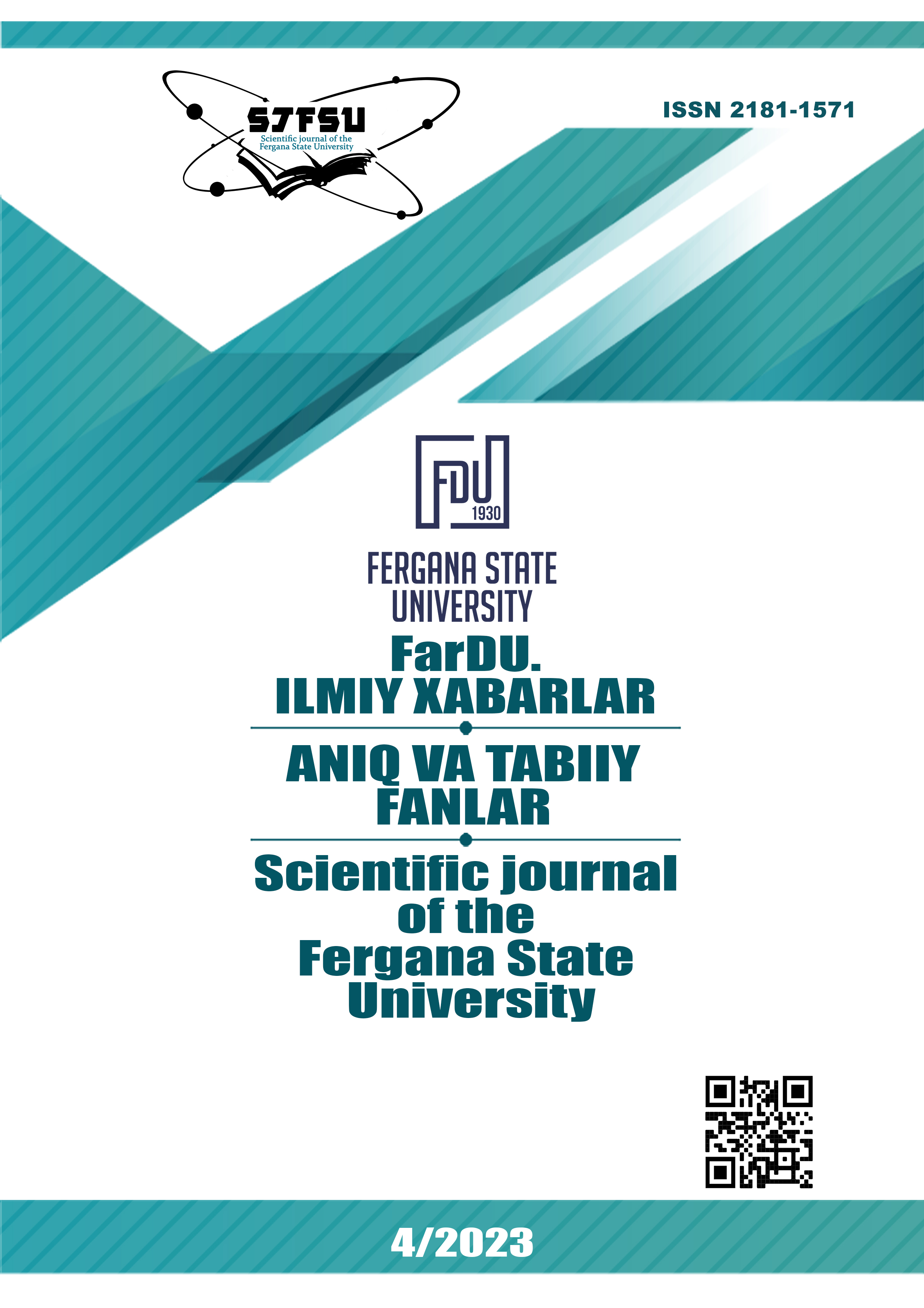CHEMICAL PROPERTIES OF PORTULACA OLERАCEA
Main Article Content
Abstract
The article describes the biological structure of the medicinal plant portulaca oleracea, its origin, its long-standing value as a medicinal plant, its distribution areas, and its composition of flavonoids, alkaloids, terpenoids, organic acids, vitamins, minerals, omega-3 fatty acids and their chemical properties. shown with structures. About the role of the substances contained in medicinal portulaca oleracea in the human body and what types of diseases they help in the treatment of various diseases, and the importance of modern medicine and folk medicine in the treatment of various diseases, that it is a promising medicinal plant, antioxidant, anti-inflammatory, antimicrobial, hypolipidemic, diabetes showing a number of pharmacological activities, including against and others, and the preparation of a food supplement from this plant compared to the synthetic drugs used by the members of our society in the prevention of negative effects on the human body and in the treatment of diseases covered with extensive information on its usefulness. Information is given on the fact that the production of food additives is convenient in every way: the raw materials are cheap, they are environmentally friendly, the production processes are not complicated, and they grow in almost all regions of our country, which means that the search for raw materials does not cause problems.
Article Details

This work is licensed under a Creative Commons Attribution-NonCommercial-NoDerivatives 4.0 International License.
References
. Аsqarov I.R. “Табобат қомуси” book. Тashkent “МУМТОЗ СЎЗ” 2019 (Askarov I.R. "Tabobat qomusi" book. Tashkent "MUMTAZ SOZ" 2019)
Аsqarov I.R. “Сирли табобат” book. Tashkent “Фан ва технологиялар нашриёт-матбаа уйи” – 2021 82-85 бетлар (2. Askarov I.R. "Sirli tabobat" book. Tashkent "Science and Technology Publishing House" - 2021 pp. 82-85)
A. S. Lee, J. S. Kim, Y. J. Lee, D. G. Kang, and H. S. Lee, “Anti- TNF-훼 activity of Portulaca oleracea in vascular yendothelial cells,” International Journal of Molecular Sciences, vol. 13, no. 5, 5628–5644 betlar., 2012.
X. J. Zhang, Y. B. Ji, Z. Y. Qu, J. C. Xia, and L. Wang, “Exper- imental studies on antibiotic functions of Portulaca oleracea L. in vitro,” Chinese Journal of Microecololgy, vol. 14, no. 6, 277–280 betlar., 2002.
Seema B. David B. Haytowitz M. Joanne M. USDA Database for the Flavonoid Content of Selected Foods/B. Seema //Nutrient Data Laboratory Beltsville Human Nutrition Research Center Agricultural Research Service U.S. Department of Agriculture-2013-c159.
K. Chan, M. W. Islam, M. Kamil yet al., “The analgesic and anti-inflammatory yeffects of Portulaca oleracea L. subsp. Sativa (Haw.) Celak,” Journal of Ethnopharmacology, vol. 73, no. 3, 445–451 betlar., 2000.
B. Chen, H. Zhou, W. Zhao, W. Zhou, Q. Yuan, and G. Yang, “Effects of aqueous yextract of Portulaca oleracea L. on oxidative stress and liver, spleen leptin, PAR훼 and FAS mRNA yexpression in high-fat diet induced mice,” Molecular Biology Reports, vol. 39, no. 8, 7981–7988 betlar., 2012.
A. N. Rashed, F. U. Afifi, and A. M. Disi, “Simple yevaluation of the wound healing activity of a crude yextract of Portulaca oleracea L. (growing in Jordan) in Mus musculus JVI-1,” Journal of Ethnopharmacology, vol. 88, no. 2-3, 131–136 betlar., 2003.
X. Xu, L. Yu, and G. Chen, “Determination of flavonoids in Portulaca oleracea L. by capillary electrophoresis with electro- chemical detection,” Journal of Pharmaceutical and Biomedical Analysis, vol. 41, no. 2, 493–499 betlar., 2006.
H. B. Zhu, Y. Z. Wang, Y. X. Liu, Y. l. Xia, and T. Tang, “Anal- ysis of flavonoids in Portulaca oleracea L. by UV-vis spec- trophotometry with comparative study on different extraction technologies,” Food Analytical Methods, vol. 3, no. 2, 90–97 betlar., 2010.
Yan-Xi-Zhou, Hai-Liang Xin, Khalid Rahman and other. “Portulaca olerecea: A review of Phytochemistry and Pharmacological yeffects”. Hindawi Publis’hing Corporation Biomed Research International Volume 2015
Arshiya Sultana, Khaleequr Rahman.“Portulaca olerecea: A global panacea with yetnomedicinal and pharmacological potential”. “International journal of Pharmacy and Pharmaceutical Sciences” Vol 5 Suppl 2, 2013
Ajay Kumara Sajana Sreedharana Arun Kumar Kashyapb PardeepSingh Nirala Ramchiaryd. “A review on bioactive phytochemicals and ethnopharmacological potential of purslane (Portulaca oleracea L.) ”. “ResearchSquare” volume 8, issue 1. January 2022.
Нассер Раудас Абдул Хаким. “Фармакогностическое исследование портулака огородного (Portulaca Oleracea L.)” Диссертaция на соискание ученой степени кандидата фармацевтических наук. Москва – 2021 (14. Nasser Raudas Abdul Hakim. “Pharmacognostic study of garden purslane (Portulaca Oleracea L.)” Thesis for the degree of Candidate of Pharmaceutical Sciences. Moscow - 2021)

